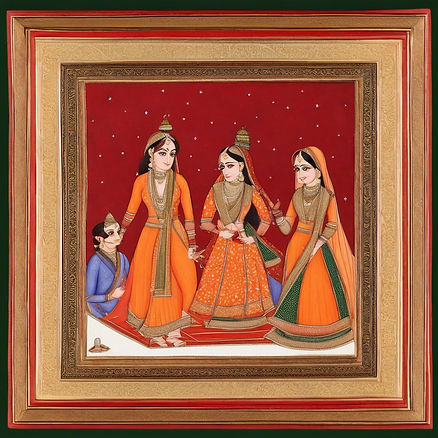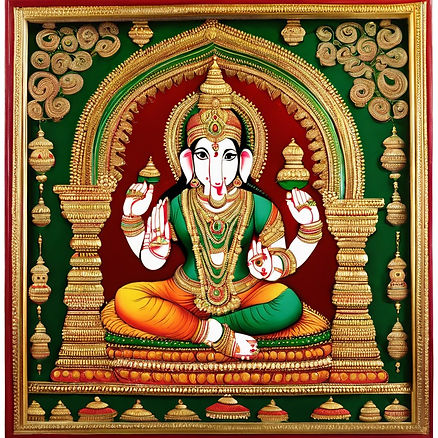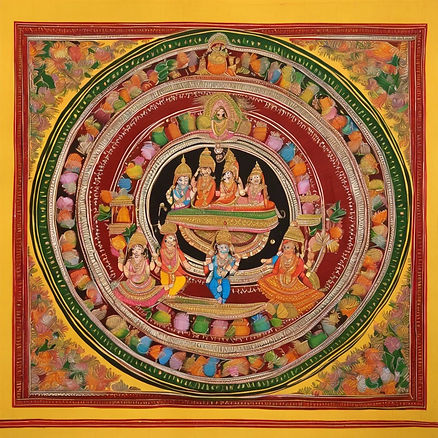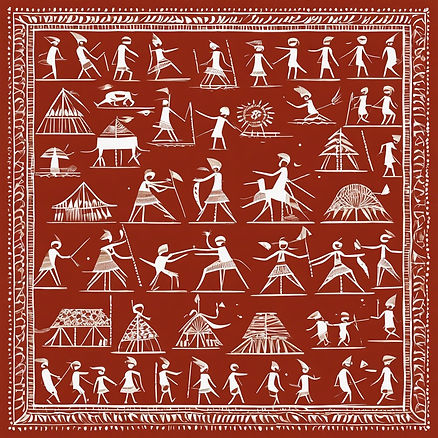India, with its rich cultural heritage and vibrant artistic traditions, boasts a diverse array of painting styles that have flourished throughout history. From the intricately detailed miniatures of the Mughal era to the vibrant folk art of rural villages, traditional Indian painting is a testament to the country’s artistic prowess and creative ingenuity. Today, let’s embark on a journey through time and explore the fascinating world of traditional Indian painting styles.
1. Mughal Miniature Painting

One of the most renowned and exquisite forms of traditional Indian painting is Mughal miniature painting, which flourished during the Mughal Empire in the 16th to 19th centuries. Characterized by its intricate detail, vibrant colors, and Persian-inspired motifs, Mughal miniatures often depicted scenes from epic poems, royal court life, and religious texts. Artists employed meticulous brushwork and delicate gold leaf embellishments to create stunningly beautiful works of art that captivated the imagination and delighted the senses.
2. Rajput Painting

Rajput painting, originating in the royal courts of Rajasthan and the hills of Himachal Pradesh, is another notable style of traditional Indian painting. Known for its bold colors, lyrical compositions, and romantic themes, Rajput painting often depicted scenes from Hindu mythology, epic love stories, and courtly life. Artists employed a distinctive flat perspective and stylized forms to create visually striking and emotionally evocative works that reflected the opulence and refinement of Rajput culture.
3. Tanjore Painting

Tanjore painting, originating in the southern state of Tamil Nadu, is a unique and highly decorative style of traditional Indian painting. Characterized by its rich colors, intricate gold leaf embellishments, and three-dimensional relief work, Tanjore paintings often depicted Hindu deities, mythological scenes, and religious iconography. Artists used a combination of natural pigments, semiprecious stones, and gold foil to create lavish and ornate works of art that exuded a sense of divine beauty and spirituality.
4. Pattachitra Painting

Pattachitra painting, hailing from the eastern state of Odisha and the neighboring state of West Bengal, is a traditional form of scroll painting that dates back centuries. Characterized by its intricate line work, vibrant colors, and intricate detailing, Pattachitra paintings often depicted scenes from Hindu mythology, folk tales, and daily life. Artists used natural pigments derived from minerals, plants, and stones to create stunningly beautiful and culturally rich works of art that were often displayed during religious festivals and ceremonies.
5. Warli Painting

Warli painting, originating from the indigenous Warli tribe of Maharashtra, is a simple yet striking style of traditional Indian painting. Known for its geometric patterns, monochromatic palette, and rhythmic compositions, Warli paintings often depicted scenes from tribal life, nature, and folklore. Artists used a combination of rice paste and natural pigments to create bold and graphic works of art that celebrated the harmony between humans, animals, and the natural world.
6. Madhubani Painting

Madhubani painting, originating from the Mithila region of Bihar, is a vibrant and colorful style of traditional Indian painting. Characterized by its intricate patterns, bold colors, and mythological themes, Madhubani paintings often depicted scenes from Hindu mythology, religious rituals, and village life. Artists used natural pigments, such as powdered rice, turmeric, and indigo, to create visually stunning and culturally significant works of art that were traditionally painted on walls, floors, and household objects.
Conclusion
As we conclude our overview of traditional Indian painting styles, we are reminded of the rich cultural heritage and artistic diversity that defines India’s artistic traditions. From the intricate miniatures of the Mughal era to the vibrant folk art of rural villages, traditional Indian painting styles are a testament to the country’s creative ingenuity and cultural richness. Whether depicting scenes from epic poems, religious texts, or everyday life, these paintings offer a window into India’s past, present, and future—a vibrant tapestry of tradition and creativity that continues to inspire and captivate audiences around the world.




0 Comments